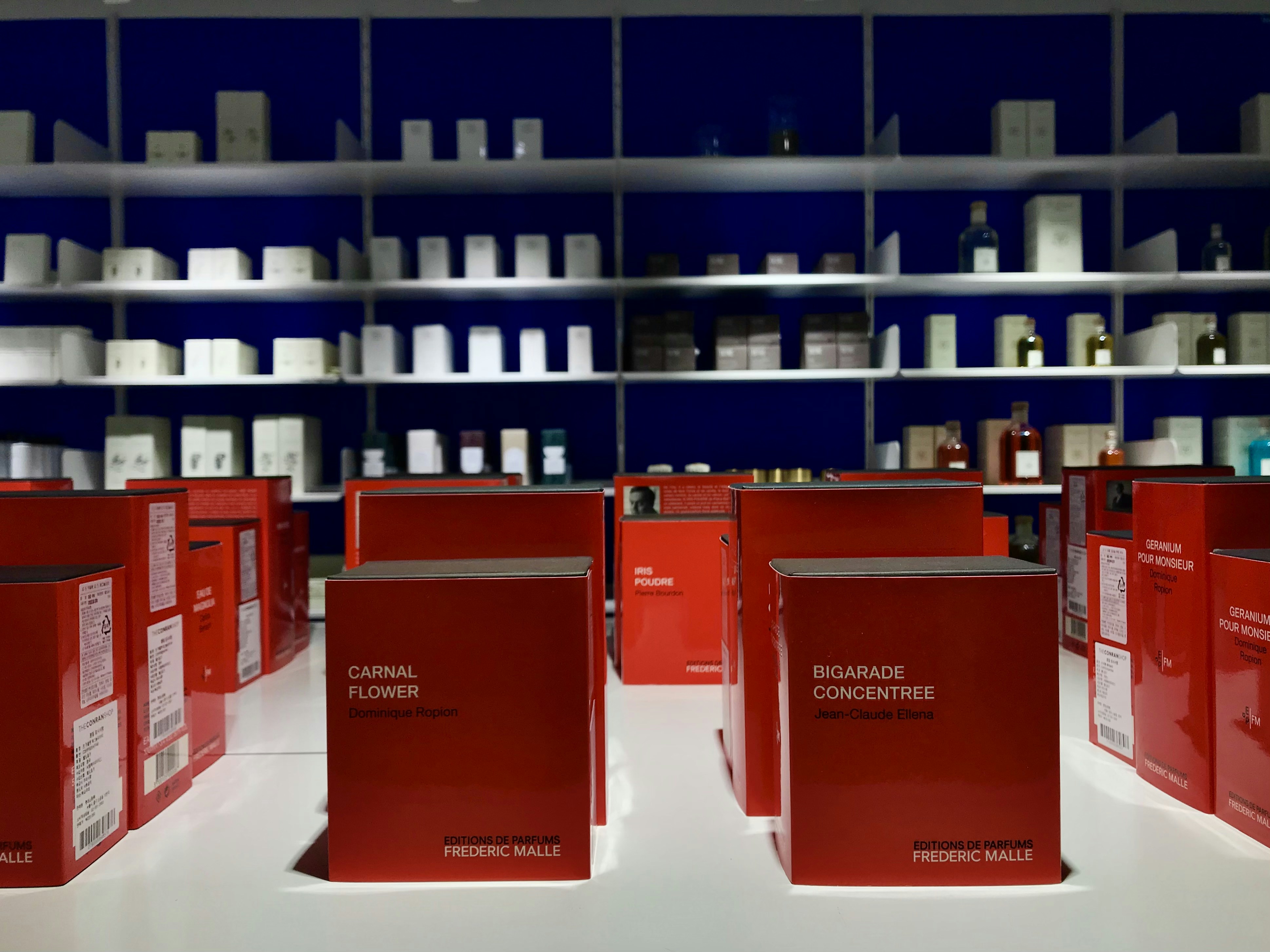Effective Merchandising Strategies: Boost Your Sales Now with Strikingly!
Effective Merchandising Strategies: Boost Your Sales Now with Strikingly!

Merchandising is a key aspect of retail that can significantly impact your sales and revenue. Understanding merchandising is crucial for businesses looking to boost their bottom line. Cross merchandising, in particular, is a powerful strategy for increasing revenue by promoting complementary products together. But what exactly is merchandising and how does it work? In this guide, we'll define merchandising, explore its meaning, and discuss its importance in driving sales.
Merchandising Definition: Boost Your Sales Now
Merchandising refers to the planning and promotion of products at the point of sale to maximize sales and profit. It involves strategic product placement, effective visual displays, and persuasive marketing techniques to attract customers. By understanding the principles of merchandising, businesses can optimize their sales strategies and drive growth.
The Power of Cross Merchandising: Increase Your Revenue
Cross merchandising involves displaying related products together to encourage additional purchases. This technique increases the average transaction value and enhances the overall shopping experience for customers. By leveraging cross merchandising, businesses can capitalize on impulse purchases and drive higher revenue.
What Is Merchandising and How Does It Work?
Merchandising meaning encompasses a wide range of activities aimed at presenting products in a way that maximizes their appeal to customers. Every aspect of product selection and store layout design influences consumer behavior and drives sales. Understanding how merchandising works is essential for businesses seeking sustainable growth in today's competitive retail landscape.
The Importance of Effective Merchandising Strategies

The Impact of Visual Merchandising
Visual merchandising is crucial in capturing customers' attention and influencing their purchasing decisions. By strategically arranging products, using color schemes, and creating attractive displays, retailers can create a visually appealing environment that draws customers in and encourages them to make purchases.
Strategies to Optimize Product Placement
Product placement plays a crucial role in influencing customer purchasing decisions within a physical or digital store. You can grab attention, increase sales, and create a more positive customer experience by strategically positioning your products. Here are some key strategies to optimize product placement.
Understanding Customer Behavior
- Traffic Flow Analysis. Observe how customers navigate the store. Place high-demand or impulse-buy products in high-traffic areas like entrances, exits, and checkout lanes.
- Eye-Level is Buy-Level. Prime shelf space is typically at eye level. Position your most profitable products or new offerings at eye level to maximize visibility.
- Consider the "Heat Map". Analyze heat map data (if available) to understand which areas of your store receive the most attention. Use this data strategically to place products based on browsing patterns strategically.
Leveraging Product Psychology and Visual Merchandising
- Product Grouping (Cross-Merchandising). Group complementary products together. For example, place phone cases near phones or socks near shoes. This encourages impulse purchases and reminds customers of additional needs.
- Color Psychology. Use color strategically. Bright colors tend to grab attention, while cooler colors can create a sense of calm. Consider your target audience and product type when choosing color palettes for product displays.
- Signage and Labeling. Clear and informative signage is essential. Labels should highlight product features, benefits, and special offers.
Optimizing Shelf Space and Display Techniques
- Vertical Merchandising. Utilize vertical space effectively. Stack products neatly to create a visually appealing display and maximize shelf space.
- End Caps and Feature Displays. Dedicate prime end caps or high-visibility areas to promoting new products, seasonal items, or special offers. This will draw customer attention and encourage browsing.
- Facings (Product Frontage). The number of product facings (how many products are displayed facing the customer) impacts perceived value and sales. Adjust facings based on demand and product size to ensure sufficient product visibility without cluttering shelves.
Data-Driven Decisions and A/B Testing
- Sales Data Analysis. Analyze sales data to identify top-selling and slow-moving products. Adjust shelf placement accordingly, prioritizing high-performing items in more prominent locations.
- A/B Testing (Optional). For online stores, consider A/B testing different product placements to see which layouts generate the most clicks or conversions.
- Stay Informed on Trends. Be mindful of evolving trends in product placement and visual merchandising. Research best practices within your industry and adapt your strategies accordingly.
Remember, optimizing product placement is an ongoing process. By understanding customer behavior, leveraging visual merchandising techniques, and utilizing data to your advantage, you can create a compelling shopping experience that effectively converts browsers into buyers.
Leveraging Up-selling and Cross-selling Techniques
Up-selling involves persuading customers to purchase a higher-end version of a product they are interested in, while cross-selling encourages them to buy related or complementary items. By training staff to identify opportunities for up-selling and cross-selling, retailers can boost their average transaction value and enhance customer satisfaction.
By focusing on the impact of visual merchandising, strategies for optimizing product placement, and leveraging up-selling and cross-selling techniques, retailers can enhance the overall shopping experience for their customers while increasing sales opportunities through effective merchandising strategies.
Creating a Compelling In-Store Experience
Designing Eye-catching Window Displays
When it comes to merchandising, designing eye-catching window displays is crucial in attracting potential customers and driving foot traffic into your store. By strategically arranging your products and incorporating creative elements such as lighting and props, you can effectively communicate your brand's story and entice passersby to step inside.
Utilizing In-store Signage
In merchandising, in-store signage guides customers through their shopping journey. Clear and informative signage helps customers locate specific products and serves as an opportunity to convey promotional messages and highlight key product features, ultimately influencing purchasing decisions.
Implementing Interactive Merchandising
Interactive merchandising is an innovative approach that enhances customers' overall in-store experience. By incorporating interactive elements such as touch-screen displays or product demonstrations, you can engage shoppers on a deeper level, enabling them to interact with your merchandise and better understand its value.
Now that we've explored the importance of creating a compelling in-store experience through eye-catching window displays, in-store signage, and interactive merchandising, let's explore online merchandising techniques to further enhance customer engagement and drive sales.
Online Merchandising Techniques

Enhancing Product Descriptions and Imagery
When it comes to online merchandising, how you describe and showcase your products can make a huge difference in driving sales. Make sure to provide detailed and enticing product descriptions that highlight the key features and benefits. Additionally, high-quality imagery that showcases the product from different angles can help customers make informed purchasing decisions.
Implementing Personalization and Recommendations
Personalization is a powerful online merchandising technique that involves tailoring product recommendations and content based on individual customer preferences and behavior. By leveraging data analytics and customer insights, you can create personalized recommendations that are more likely to resonate with your audience, ultimately increasing conversions and customer satisfaction.
Leveraging User-generated Content for Social Proof
User-generated content, such as customer reviews, testimonials, and social media posts, can be valuable social proof for your online store. By showcasing the real-life experiences of satisfied customers, you can build trust and credibility with potential buyers. Encourage customers to share their experiences with your products and leverage this user-generated content across your website and marketing channels.
Implementing these online merchandising techniques can enhance the overall shopping experience for your customers while driving sales and revenue for your e-commerce business.
Use Strikingly for Effective Merchandising

Strikingly Landing Page
Strikingly offers a range of e-commerce templates designed to help you create visually appealing and user-friendly online stores. These templates are fully customizable, allowing you to showcase your products in the best possible way and provide a seamless shopping experience for your customers. Using Strikingly's e-commerce templates, you can effectively showcase your merchandise and drive sales through your online store.
Utilizing Strikingly's E-commerce Templates

Perspective Online Store Template
With Strikingly's e-commerce templates, you can easily set up a professional-looking online store without any technical expertise. These templates are designed to highlight your merchandise and make it easy for customers to browse and purchase your products. Whether you're selling clothing, accessories, or digital products, Strikingly's e-commerce templates provide the perfect platform to showcase your merchandise and drive sales.
Optimizing SEO with Strikingly's Built-in Tools

Strikingly SEO Checklist
Strikingly comes equipped with built-in SEO tools that help optimize your online store for search engines. These tools can improve the visibility of your merchandise and attract more potential customers to your website. With features like customizable meta tags, image alt text optimization, and URL customization, you can ensure that your merchandise is easily discoverable by search engines and drive more organic traffic to your online store.
Enhancing User Experience with Strikingly's Mobile Optimization

Strikingly Website in Different Devices
In today's mobile-first world, it's crucial to ensure that your online store provides a seamless shopping experience across all devices. Strikingly's mobile optimization features allow you to create a responsive design that adapts to different screen sizes, ensuring your merchandise looks great on smartphones, tablets, and desktops. With mobile-optimized product pages and streamlined checkout processes, you can provide a user-friendly experience that encourages customers to purchase on the go.
Measuring Merchandising Success
Measuring the success of your merchandising efforts is crucial for sustainable growth. Key performance indicators for merchandising include sales conversion rates, average transaction value, and customer retention. These metrics provide insights into the effectiveness of your merchandising strategies and help you make data-driven decisions to optimize your sales.
Key Performance Indicators for Merchandising
Sales conversion rates measure the percentage of visitors to your store who make a purchase, indicating the effectiveness of your merchandising in driving sales. Average transaction value reflects the average amount customers spend per transaction, showing how well you can upsell or cross-sell products. Customer retention measures the percentage of customers who return to make additional purchases, indicating loyalty and satisfaction with your merchandising efforts.
Analyzing Sales Data and Customer Insights
Analyzing sales data and customer insights is essential for understanding the impact of your merchandising strategies. By examining which products are selling well and which are underperforming, you can adjust your product placement and assortment accordingly. Understanding customer behaviors and preferences through data analysis allows you to tailor your merchandising approach to meet their needs better.
Implementing Continuous Optimization Strategies
Continuous optimization is key to successful merchandising. By constantly monitoring key performance indicators and analyzing sales data, you can identify areas for improvement in your merchandising strategies. Implementing A/B testing, tweaking product displays, and refining online recommendations are ways to optimize your merchandising efforts for better results continuously.
Conclusion
Effective merchandising strategies are crucial for sustainable growth in retail businesses. By understanding merchandising and implementing cross-merchandising techniques, businesses can increase their revenue and create a compelling in-store experience. It's important to define merchandising for long-term success and continuously optimize strategies to stay ahead of the competition.
Leveraging Effective Merchandising Strategies for Sustainable Growth
To achieve sustainable growth, businesses need to leverage effective merchandising strategies that optimize product placement, enhance user experience, and utilize Strikingly's features for online merchandising. By implementing these strategies, businesses can create a strong brand presence and drive online and in-store sales.
Implementing Cross Merchandising for Increased Revenue
Cross merchandising is a powerful technique that can significantly increase revenue by strategically placing complementary products and leveraging up-selling and cross-selling techniques. By understanding the meaning of cross merchandising and its impact on sales, businesses can maximize their profit potential.
Defining Merchandising for Long-term Success
Defining what merchandising is goes beyond just product placement - it's about creating an engaging customer experience that drives long-term success. Businesses can stay relevant in an ever-changing market landscape by analyzing sales data, leveraging user-generated content, and continuously optimizing strategies.
With the right approach to effective merchandising strategies, businesses can achieve sustainable growth, increase revenue through cross merchandising, and define their path to long-term success in the competitive retail industry.
